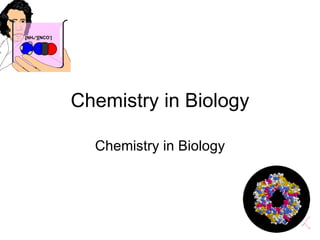Report
Share

Recommended
More Related Content
What's hot
What's hot (20)
Test Bank for Lehninger Principles of Biochemistry 6e Nelson

Test Bank for Lehninger Principles of Biochemistry 6e Nelson
B.sc. biochemistry sem 1 introduction to biochemistry unit 1 foundation of bi...

B.sc. biochemistry sem 1 introduction to biochemistry unit 1 foundation of bi...
What are Peptides Difference between Peptides and Proteine

What are Peptides Difference between Peptides and Proteine
B.sc. biochemistry sem 1 introduction to biochemistry unit 4 metabolism and b...

B.sc. biochemistry sem 1 introduction to biochemistry unit 4 metabolism and b...
Viewers also liked
Viewers also liked (20)
Similar to Biochemistry review presentation
Similar to Biochemistry review presentation (20)
Biology - Chp 2 - The Chemistry Of Life - PowerPoint

Biology - Chp 2 - The Chemistry Of Life - PowerPoint
important slide related to physiology as well different cell structure.pptx

important slide related to physiology as well different cell structure.pptx
Biochemistry review presentation
- 1. Chemistry in Biology Chemistry in Biology
- 4. Isotopes, Radioactive Isotopes Atoms of the same element that have different numbers of neutrons are called isotopes. If an atom is unstable , the nucleus can decay and give off radiation – these are called radioactive isotopes. Carbon-14 is a radioactive isotope that is found in all living things. Scientists can determine how old an object is by determining how much Carbon 14 is in the object.